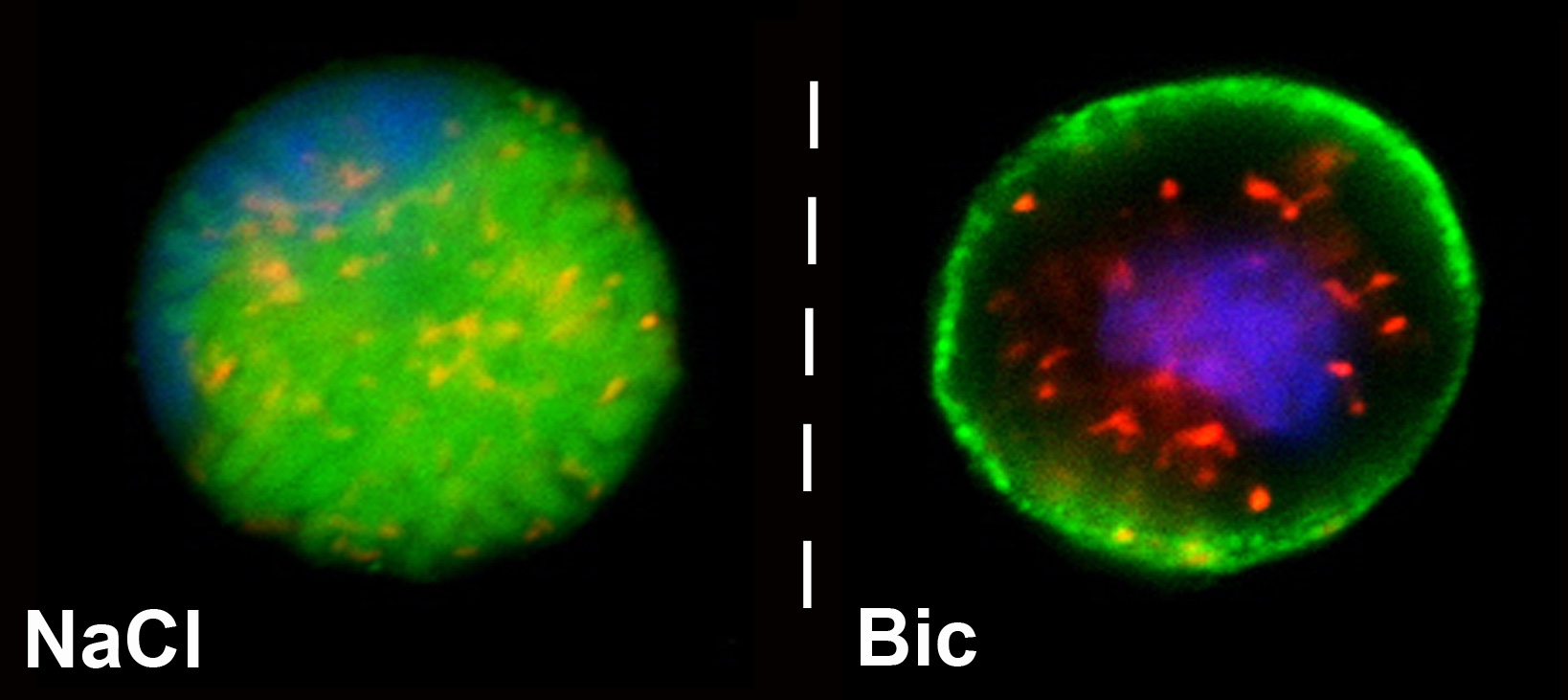Animal Physiology
Faculty research interests in the area of animal physiology include neurophysiology of the brain (Russo-Neustadt Lab) and comparative physiology & cell biology (Roa Lab).
Neurophysiology of the Brain
 |
Contact: Amelia Russo-Neustadt, M.D., Ph.D. Office: ASCL 217, ext: 3-2074 Laboratory: ASCL 212, ext: 3-6045 E-mail: [email protected] Web: http://instructional1.calstatela.edu/arusson |
|
| No image available. |
Research Summary
Our current research focus involves the study of physical activity and antidepressant treatment interactions in the brain. Our studies seek to reveal the mechanisms of growth factor regulation and behavioral/functional recovery resulting from these interactions.
| Representative Publications |
| Chen, M.J., and Russo-Neustadt, A. 2007. Running exercise- and antidepressant-induced increases in growth and survival-associated signaling molecules are IGF-dependent. Growth Factors 25: 118-131. |
| Chen, M.J., Nguyen, T.V., Pike, C.J., and Russo-Neustadt, A. 2007. Norephinephrine induces BDNF and activates the PI-3K and MAPK cascades in embryonic hippocampal neurons. Cellular Signaling 19: 114-128. |
| Chen, M.J., Ivy, A.S., and Russo-Neustadt, A. 2006. Nitric oxide synthesis is required for exercise-induced increases in hippocampal BDNF and phosphatidylinositol 3' kinase expression. Brain Research Bulletin 68: 257-268. |
| Russo-Neustadt, A., and Chen, M.J. 2005. Brain-derived neurotrophic factor and antidepressant activity. Current Pharmaceutical Design 11 1495-1510. |
| Chen, M.J., and Russo-Neustadt, A. 2005. Exercise activates the phosphatidylinositol-'3-kinase pathway. Molecular Brain Research 135: 181-193. |
Comparative Physiology & Cell Biology
| Contact: Jinae Roa, Ph.D. Office: ASCB 323D, ext: 3-7413 Laboratory: ASCB 361, ext: 3-2090 E-mail: [email protected] Web: jinaeroa.wixsite.com/jinaeroa |
||
| Primary cultures of ray gill cells highlighting the proton pump (green), mitochondria (red), and nucleus (blue). The proton pump is localized to the cytoplasm of control cells (NaCl) but translocates to the cell membrane during acid-base stress (Bic). Proton pump translocation is an essential cellular mechanism animals use to maintain blood pH. |
Research Summary
The Roa Lab utilizes comparative physiology to understand fundamental cellular mechanisms for acid-base sensing and energy metabolism in animals. Specifically, we use primary cell cultures from non-model animals to visualize changes in intracellular organization that results from coordinated intracellular signaling mechanisms activated during stress.
| Representative Publications |
|
Roa JN, Tresguerres M. 2019. Differential glycogen utilization in shark acid- and base-regulatory cells. Journal of Experimental Biology 222: 199448. doi: 10.1242/jeb.199448 PMID: 31085601 |
| Roa JN, Tresguerres M. 2017. Bicarbonate-sensing soluble adenylyl cyclase is present in the cell cytoplasm and nucleus of multiple shark tissues. Physiological Reports 5: e13090. doi: 10.14814/phy2.13090 PMID: 28108644 |
|
Roa JN, Tresguerres M. 2016. Soluble adenylyl cyclase is an acid-base sensor in epithelial base- secreting cells. American Journal of Physiology, Cell Physiology 311: C340–C349. doi: 10.1152/ajpcell.00089.2016 PMID: 27335168 |
| Tresguerres M, Barott KL, Barron ME, Roa JN. 2014. Established and potential physiological roles of bicarbonate-sensing soluble adenylyl cyclase (sAC) in aquatic animals. Journal of Experimental Biology 217: 663–672. doi: 10.1242/jeb.086157 PMID: 24574382 |
|
Roa JN, Munévar CL, Tresguerres M. 2014. Feeding induces translocation of vacuolar proton ATPase and pendrin to the membrane of leopard shark (Triakis semifasciata) mitochondrion-rich gill cells. Comparative Biochemistry and Physiology, Part A: Molecular & Integrative Physiology 174: 29– 37. doi: 10.1016/j.cbpa.2014.04.003 PMID: 24746982 |
Note: ASCL = Wallis Annenberg Integrated Science Complex-Wing A (La Kretz Hall). When calling from off-campus, the area code and prefix for all telephone extensions is (323) 34X-XXXX.
